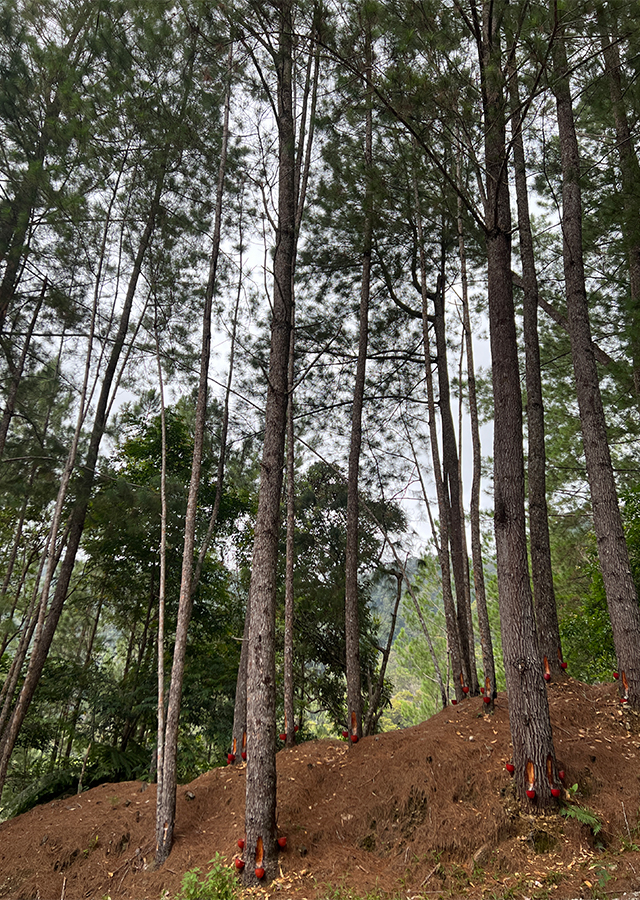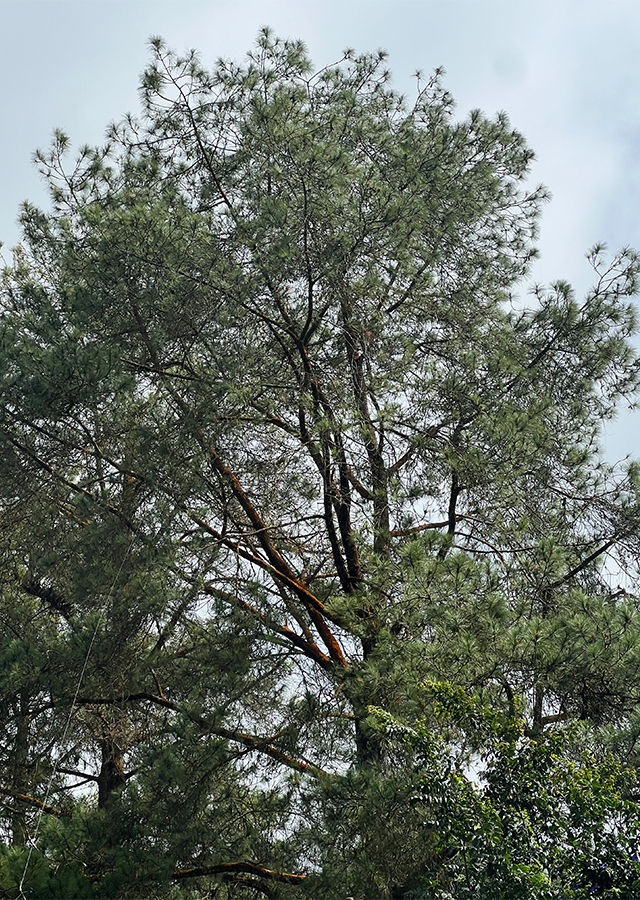Traditional Herbs from Pinus merkusii
treat_itching
- Take enough pine resin.
- Apply it to the itchy skin.
boils
- Take enough pine resin.
- Apply it to the boil.
What is Pinus merkusii Looks like??



Parts of Pinus merkusii that could be used
- Sap
- Stem
Pinus merkusii Distribution
Pinus merkusii is a species of pine native to Southeast Asia and known as the Sumatran Pinus, located in Indonesia, especially in northern Sumatra (Aceh, Tapanuli and Kerinci). Indonesia is included in the top three countries for the production of P. merkusii resin. This species produces resin which can be used as an ingredient in traditional medicine, including being believed to treat skin disorders. Pine also has the potential to be a natural source of antioxidants and antiaging. Several studies reveal that pine has high therapeutic value and has potential as a medicine in the future due to its bioactivity. Pines also produce pine wood which emits an aroma and can be used as aromatherapy and fragrance (perfume). In addition, pine has been used as a natural source of oleoresin and raw material for the pulp and paper industry. Pines are a pioneer species, and can inhabit a variety of forest and savanna habitats. Often used as a plant for the rehabilitation of degraded areas due to its tolerance to fire and poor soil conditions, it can also be used as a source of brown or green dye and as an ornamental plant. Pine trees have been classified as 'Vulnerable' on the IUCN Red List of Threatened Species (2013).Agroecology of Pinus merkusii
Pinus merkusii is a humid tropical plant found at altitudes from sea level to 2,000 m above sea level. It grows in areas where the average annual rainfall is in the range of 1,000 - 2,800 mm, sometimes up to 3,500 mm, and the average annual temperature is 21 - 28 °C with an average maximum temperature of the hottest month 24-32 °C and the average minimum temperature of the coldest month is 18 - 24 °C. This species really needs light for growth. Reduced intensity and short duration of sunlight received can inhibit tree growth. Able to grow in various types of soil, including dry sandy soil, gravelly soil, red tropical clay (latosol), clay soil, alluvial soil and acid ultisol on sandstone which is often poorly drained. Prefers pH in the range of 4.5 - 5.5, tolerates 4 - 6.5. Established plants are drought and wind tolerant.
Morphology of Pinus merkusii
- The stem is straight and cylindrical, can be free from branches for 15 - 25 m, grey-brown, thick and fissured. The heartwood is yellowish brown to orange with dark red veins and many resin passages, darkens when exposed to light , the texture is quite rough.
- Leaves are green, needle-shaped, slender but stiff, 16-25 cm long, and in pairs.
- Tube-shaped flowers (strobilus) that grow singly or in pairs, with long 5-11 cm.
- Seeds are small, thin-winged, ovate, and fall easily.
Cultivation of Pinus merkusii
- Plant propagation is through seeds and stem cuttings. Propagation by tissue culture is also possible.
- Seeds germinate in 8 - 21 days. After about 8 months, the seeds planted in the nursery, with a plant height of approximately 20 - 25 cm, are ready planted in the field.
- Resin harvest can begin approximately 15 years after planting.
Pinus merkusii, more details :
Chemical Content of Pinus merkusiiTerpenoid allelopathic compounds (monoterpenes ɑ-pinene and β-pinene), flavonoids (pinocembrin), phenols, alkaloids, tannins, saponins, triterpenoids, steroids
Benefits of Pinus merkusii
Treating skin diseases (scabies, eczema, itching, wounds, scabs, boils), diseases of the mucous membranes and respiratory complaints (coughs, colds, influenza and tuberculosis), overcoming stress, relieving muscle pain, treating kidney and bladder complaints ( internal application), rheumatism (rubbing and steam baths). Has several biological activities as anti-inflammatory, antioxidant and antifungal.
Simplisia of Pinus merkusii
Another Facts for Pinus merkusii :
Synonym of Pinus merkusiiPinus finlaysoniana Wall. ex Blume, Pinus sumatrana Jungh., Pinus ustulata (Businsky) Businsky
Habitus of Pinus merkusii
Tree. Annual tree (perennial), can reach a height of 70 m and a diameter of around 55-140 cm
Habitat of Pinus merkusii
- Mountains
- Land
No comments:
Post a Comment